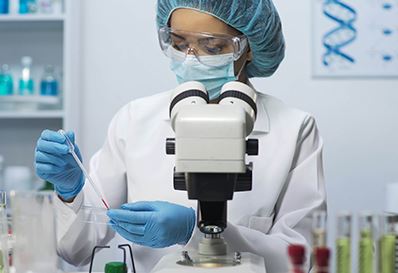Basic Fertility Tests
- Category: Education
- Written By: Atlanta Center for Reproductive Medicine

The initial fertility evaluation begins with a complete medical history of you and your partner. Your ages, weights, menstrual history, current medications, past pregnancy history will be considered.
Initial fertility testing will evaluate the health of your eggs and whether they are being released each cycle. Ovarian reserve (the quality and quantity of eggs available) is determined by doing a vaginal ultrasound on days 2, 3, or 4 of your menstrual cycle for basal antral follicle count. The follicle is the tiny “cyst” that forms around an egg. Since the egg is microscopic, we use the basal follicles seen on ultrasound as a surrogate for the number of eggs available.
On the same day, you will have blood work done for follicle-stimulating hormone (FSH), luteinizing hormone (LH), and estradiol. FSH and LH are pituitary hormones that stimulate the ovary to produce an egg. Early in the cycle, FSH levels should be low. If the ovary is not responding well, FSH rises and is a sign of diminished ovarian reserve.
Anti-mullerian hormone (AMH) is produced by the ovary. An AMH level is another way to estimate ovarian reserve. It is particularly handy because the blood can be drawn on any day of the cycle, in irregular cycles, and even while a woman is taking birth control pills. Low AMH levels are an indication of decreasing ovarian reserve, whereas high AMH levels may be indicative of other ovulatory disorders such as polycystic ovarian syndrome.
A semen analysis is an initial test for male fertility. The semen specimen is produced by masturbation. A sample should be collected after abstaining from ejaculation for at least 48 hours, but not more than 5 days. It is evaluated for volume, sperm concentration, motility, and morphology. Total motile sperm should be greater than 20 million per ejaculate. Often more than one analysis is recommended. Some men will be referred for evaluation by a urologist with a special interest in infertility. The urologic evaluation may include a physical exam or blood work for hormonal or genetic concerns.
The HSG or hysterosalpingogram is the radiologic study most often used to evaluate the shape of the uterus and to determine whether the fallopian tubes are open. The HSG is done between days 6 and 11 of the cycle (after menstrual flow has ended, but prior to ovulation). A patient lies on a table under a fluoroscope (real-time X-ray imager). The gynecologist or radiologist performs a pelvic exam using a vaginal speculum to visualize the cervix. A balloon catheter is placed in the cervix and a small amount of radiology contrast solution gently fills the uterus and is observed as it flows through the fallopian tubes and into the abdomen. Any abnormalities of the uterine cavity or findings with regard to the fallopian tubes are noted immediately and can be discussed with your physician.
The initial fertility evaluation is quite simple and can be completed in a few days. An effective evaluation leads to a successful approach to treatment and your best opportunity to move along in your journey to build your family.
For more information and to schedule an appointment, please call 678.841.1089 or click here.



